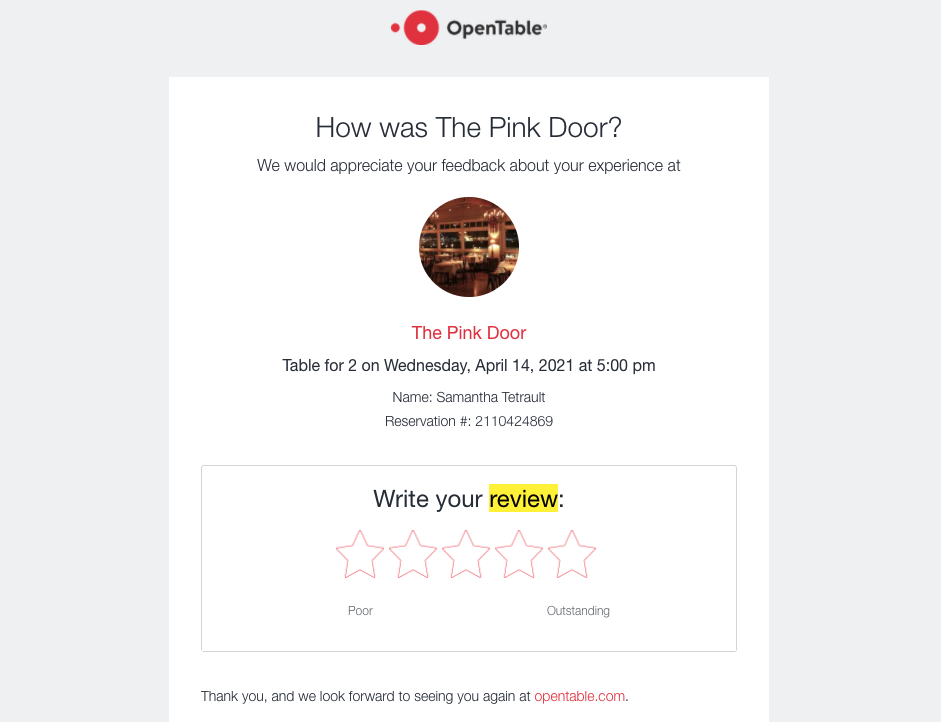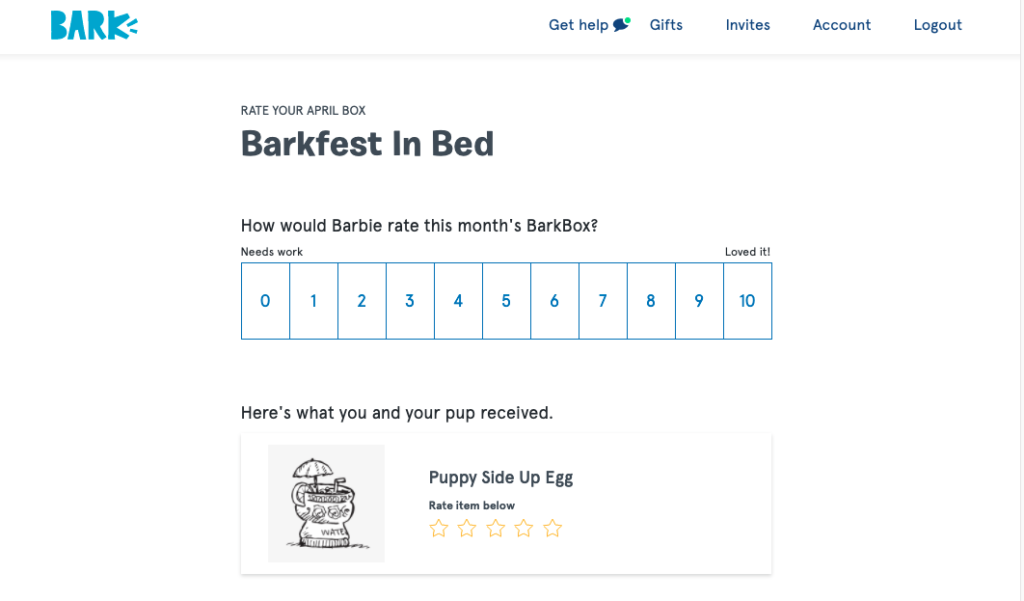Have you ever heard the phrase “show don’t tell?” When you collect a customer review, you’re putting this phrase into practice. In other words, you can tell your customers how great you are all day long, but actions speak louder than words. Instead of sharing why you think your brand is great, use your customers’ own words.
In this day and age, customers don’t shop blindly. They’re more informed than ever, and they use reviews to make purchase decisions. In fact, 90% of shoppers read at least one online review before they decide to purchase. This is even more true for those who shop online. It makes sense to always have a stream of fresh, updated reviews reflecting all of the ways your business shines.
With that in mind, how do you ask for a customer review? This is a key part of branding in the digital age, and you want to do anything you can to create a positive online footprint for your business. Many brands are surprised to learn that the best way to get customer reviews is simple—just ask for one. In this guide, we’ll explore how to ask for a customer review (and why you always should).
Why It’s Important To Ask For A Customer Review
First, why bother asking for a customer review? While you can always wait for reviews to come to you, many people aren’t motivated enough to leave a review without being prompted. Because reviews are so valuable, it’s essential that you create a strategy for asking for a customer review.
If you’ve ever made a purchase, you likely spent some time looking for online reviews. This is especially true for bigger purchases or when buying newer products or services. Reviews build trust because you can show not tell, even when customers can’t experience a product in-person.
What are the key ways customer reviews help your business?
- Social proof: Online reviews are your biggest source of social proof, and they can truly impact sales. A reported 92% of consumers are more likely to trust non-paid recommendations than any other type of advertising.
- Feedback: Your reviews are also a free way to check in with your audience and what they think about your customer experience. If you want to know what your customers think about your brand or the product/service, just ask.
- Visibility: If you’re operating an online business or a local business with an online presence, reviews are key to visibility. When you have a large number of positive reviews, search engines see you as trustworthy.
- Sales: Most importantly, reviews affect your bottom line. According to a study by Harvard Business School, a one-star increase in Yelp ratings leads to a 5-9% increase in revenue.
Ultimately, if you’re not currently asking for customer reviews, you’re missing an opportunity to connect with your audience. From understanding key feedback to improving your revenue, customer reviews are your biggest asset.
How To Ask For A Customer Review
Now that you know what customer reviews are so essential, how do you actually get them? Encouraging a customer to take time out of their schedule to complete a review isn’t always easy. While this is a great way to identify your superfans, you need to make it as simple as possible. Here are some of the best ways to ask for a customer review.
Live Review Requests
The first way to ask for a customer review is live in-person or online. If a customer approaches you with praise after a positive interaction, this is the perfect situation to ask for a review. Even if the customer doesn’t immediately praise your support team, you can still ask for a review after any positive interaction.
It doesn’t have to be a complicated process. In fact, simplicity is the best way to go. If a customer says something positive about the experience, for example, you could suggest they leave a review with a message like:
“I’m so glad you had a great experience with [product/service/support]. These kinds of comments are really helpful. If you wouldn’t mind, would you please leave us a quick review on [review platform]? That would be awesome!”
By building upon your existing connection with a customer, you set the foundation for a great review. Remember to make it as easy as possible for your customer with your live interaction. Whether that means having cards with QR codes available at an in-person setting or a quick link online, ease the tension as much as possible.
Phone Review Requests
Another way to ask for a customer review is over the phone. If your company provides any support over the phone, this can often be the perfect chance to ask clients or customers for reviews. However, it’s important to consider who you’re asking wisely. For more complex customer support issues, it might be best to wait.
That being said, if a customer provides praise or enthusiasm after receiving help, this is a sign they’re a great fit for a review. Like with live requests, don’t hesitate to ask. Many customers want to feel like their voice is valued. If a customer expresses gratitude, have your support team respond with a message like:
“I’m so happy we helped you with [issue] today, and we really appreciate your business. Would you be willing to share this experience on [online review platform]? These reviews help others who might be in a similar situation. We would really appreciate it, thanks!”
Not only does this type of message make your customer feel appreciated, but it’s likely to boost their loyalty to your brand. Again, have a simple way to follow up with customers over the phone, perhaps by sending a link to a review platform over email or text.
Email Review Requests
One of the most common ways to request reviews is through email. There are so many different ways to use email to encourage customers to leave reviews. You could send a large email blast to all of your users, or be more specific with one of these ideas below:
- Send a review request after a purchase
- Request a review after a customer downloads software or tools
- Ask for a review after a customer experience interaction
- Ask a key segment of your list
Email is a powerful tool for reviews since users can quickly click on a link to access your review platform of choice. To see this in action, let’s review some examples of email review requests.

OpenTable, an online restaurant booking platform, makes it easy for restaurants to follow up with customers after a dining experience. By sending an automated email message asking for a review, diners are likely to take action with the simple 1-5 star rating system.
Your request doesn’t have to be lengthy or complicated to be effective. Here are some examples:
- “Positive reviews from our best customers help others feel confident about choosing [Brand Name]. If you can, take 30 seconds to go to [review platform] and share your experience. We’re so grateful for your business!”
- “Thanks for visiting us! It would mean a lot to us if you could take a moment to leave a review on [review platform]. These reviews help keep our business growing, and we really value your feedback.”
Whether you send your email to your entire list of users or a segmented group, don’t underestimate how efficient this can be. Many customers are excited to leave reviews, but they might just need a reminder of how much their feedback matters.
Post- Purchase Review Requests
Next, often the easiest time to ask for customer reviews is after they’ve made a purchase. This is when their experience is the most “fresh,” so they’re highly motivated to share. You can ask for a post-purchase review request after a customer makes a purchase in any of these places:
- On the thank you or confirmation page
- In a post-purchase email
- After a download is complete

The more personalized your email or message, the better. Again, it’s all about making customers feel valued. By highlighting specific items they purchased, you show that you truly care about their specific experience. This BarkBox review page below is specific for the individual’s box, and this helps the brand get targeted feedback.
Not sure what to say? Try one of these examples below to ask for a post-purchase review:
- “Thank you for your recent order! We’re excited for you to receive [Item], and it should be shipping soon. In the meantime, we’d love if you could spare a few minutes to leave us a review on your experience!”
- “What did you think of your recent purchase? We’d love to hear what you think so we can share it with other customers.”
- “Did you find [download] helpful? If so, please take a moment to leave a review. Reviews help us improve the overall experience, and they let others know we’re serious about delivering high-quality [product type].”
These messages above are a powerful way to connect and engage with existing customers. They’ll remember that you thought of them, and they’re more likely to stay loyal to your brand in the future.
Website Review Requests
Last but not least, you can also include review requests on your website. This is an important part of improving your user experience. Not only can you get real-time feedback, but you encourage engagement on your website.
In this example below, HungryRoot, a meal delivery service, asks users for feedback about recipes directly on their website. Because customers are only asked to leave a simple review out of 5 stars, they’re likely to take action. These ratings help future users choose their own meals.
Another example of a website that encourages reviews on-page is Chewy. This pet food retailer incorporates their Google customer reviews on the footer of each page. Not only does this build social proof when users see their 4.9 rating, but it also makes it simple for existing customers to leave new reviews.
How You Shouldn’t Ask For A Customer Review
Next, with all of these examples in mind, what are things to avoid when asking for customer reviews? There are some things to always avoid since they can be off-putting. When asked correctly, customer reviews strengthen existing relationships. However, they can go sour if you’re not careful.
The main key is to always make asking for a customer review natural. Your request shouldn’t ever come across as pushy since this can make customers feel uncomfortable. Ultimately, they’re doing you a favor, so treat it as such. Pay attention to these review don’ts:
- Command: Avoid giving commands like “give us 5 stars!” Every brand wants a perfect score, but you don’t want false reviews. Ask for honesty and let your experience speak for itself.
- Difficult: Leaving a review shouldn’t be complicated. If customers have to jump through too many steps, you’re only going to make them frustrated. (Hint: you don’t want frustrated customers leaving reviews!)
- Incentives: Though it might seem smart to offer a discount, coupon, or freebie in exchange for a review, this actually goes against the FTC’s rules.
Yes, you want more reviews as a brand, but you want these to be genuine. If you have to beg and plead for that perfect 5 stars, it’s not worth it. The most valuable reviews are natural.
Leverage Your Reviews
In conclusion, your brand reviews are one of your biggest assets. Learning how to ask for reviews in a way that’s seamless is key to unlocking genuine, authentic reviews. Your audience is likely more than willing to leave their thoughts, but you need to remember to ask.
Are you making the most of your reviews? This isn’t a one-and-done process. There’s no such thing as too many reviews, so take these tips above seriously. What do your superfans have to say about your brand?
